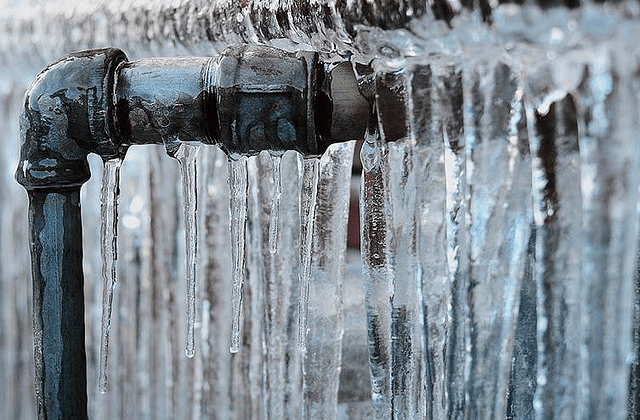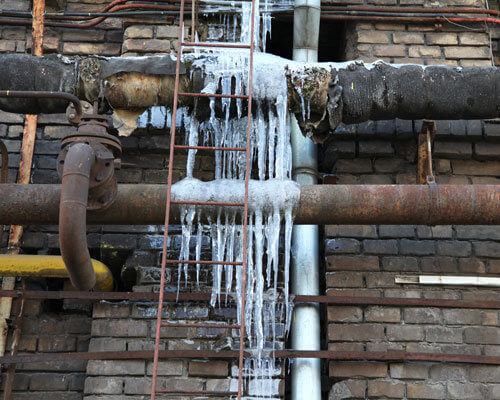In this article in the next paragraphs yow will discover a lot of helpful expertise on the subject of Helpful Tips to Prevent Frozen Pipes this Winter.

Cold weather can ruin your plumbing, specifically by freezing pipelines. Here's just how to prevent it from occurring and what to do if it does.
Intro
As temperatures drop, the risk of icy pipelines increases, possibly leading to costly fixings and water damages. Understanding just how to prevent icy pipelines is vital for homeowners in chilly environments.
Understanding Frozen Pipes
What triggers pipelines to ice up?
Pipelines freeze when exposed to temperatures below 32 ° F (0 ° C) for extended periods. As water inside the pipes freezes, it expands, putting pressure on the pipe walls and potentially creating them to break.
Dangers and damages
Frozen pipes can lead to water supply disturbances, residential or commercial property damage, and pricey repairs. Ruptured pipelines can flood homes and cause extensive structural damages.
Indications of Frozen Pipes
Recognizing frozen pipes early can avoid them from bursting.
Just how to determine icy pipelines
Look for lowered water flow from taps, unusual smells or sounds from pipes, and noticeable frost on exposed pipelines.
Avoidance Tips
Insulating at risk pipes
Wrap pipelines in insulation sleeves or use warm tape to safeguard them from freezing temperatures. Concentrate on pipes in unheated or outside locations of the home.
Home heating strategies
Maintain interior areas adequately heated up, particularly locations with pipes. Open up cupboard doors to permit cozy air to circulate around pipelines under sinks.
Protecting Outdoor Plumbing
Garden hoses and outdoor faucets
Separate and drain pipes yard pipes before winter season. Install frost-proof spigots or cover outdoor taps with protected caps.
What to Do If Your Pipes Freeze
Immediate activities to take
If you presume frozen pipelines, maintain faucets open to relieve stress as the ice melts. Make use of a hairdryer or towels soaked in warm water to thaw pipes gradually.
Long-Term Solutions
Structural adjustments
Take into consideration rerouting pipes far from exterior wall surfaces or unheated locations. Add added insulation to attics, cellars, and crawl spaces.
Upgrading insulation
Buy premium insulation for pipelines, attics, and walls. Correct insulation aids keep consistent temperature levels and reduces the risk of icy pipelines.
Verdict
Stopping icy pipes needs positive actions and fast responses. By understanding the reasons, indications, and preventive measures, home owners can secure their pipes during cold weather.
6 Proven Ways to Prevent Frozen Pipes and Protect Your Home
Disconnect and Drain Garden Hoses
Before winter arrives, start by disconnecting your garden hoses and draining any remaining water. Close the shut-off valves that supply outdoor hose bibs and leave the outdoor faucet open to allow any residual water to drain. For extra protection, consider using faucet covers throughout the colder months. It’s also important to drain water from any sprinkler supply lines following the manufacturer’s directions.
Insulate Exposed Pipes
Insulating your pipes is an effective way to prevent freezing. Pipe insulation is readily available at home improvement stores and is relatively inexpensive. Pay close attention to pipes in unheated areas such as the attic, basement, crawl spaces, or garage. Apply foam insulation generously to create a buffer against the cold. You can also wrap your pipes in heat tape or thermostat-controlled heat cables for added warmth.
Seal Air Leaks
Inspect your home for any cracks or openings that could let in cold air. Seal any holes around the piping in interior or exterior walls, as well as the sill plates where your home rests on its foundation. Additionally, make sure to keep your garage door closed unless you’re entering or exiting. Leaving it open creates a significant air leak that can lead to frozen pipes.
Allow Warm Air Circulation
During cold snaps, it’s essential to allow warm air to circulate evenly throughout your home. Leave interior doors ajar to promote better airflow. Open kitchen and bathroom cabinets to help distribute heat consistently around the rooms. If you have small children or pets, be sure to remove any household chemicals or potentially harmful cleaners from open cabinets for safety.
Let Faucets Drip
A small trickle of water can make a big difference in preventing ice formation inside your pipes. When temperatures drop significantly, start a drip of water from all faucets served by exposed pipes. This continuous flow helps prevent the water from freezing. Additionally, running a few faucets slightly can relieve pressure inside the pipes, reducing the chances of a rupture if the water inside does freeze.
https://choateshvac.com/6-proven-ways-to-prevent-frozen-pipes-and-protect-your-home/

I am just very fascinated by How to Prevent Your Pipes From Freezing and I hope you enjoyed reading my page. Sharing is nice. One never knows, you could be helping someone out. Thanks for your time spent reading it.
Free Estimate